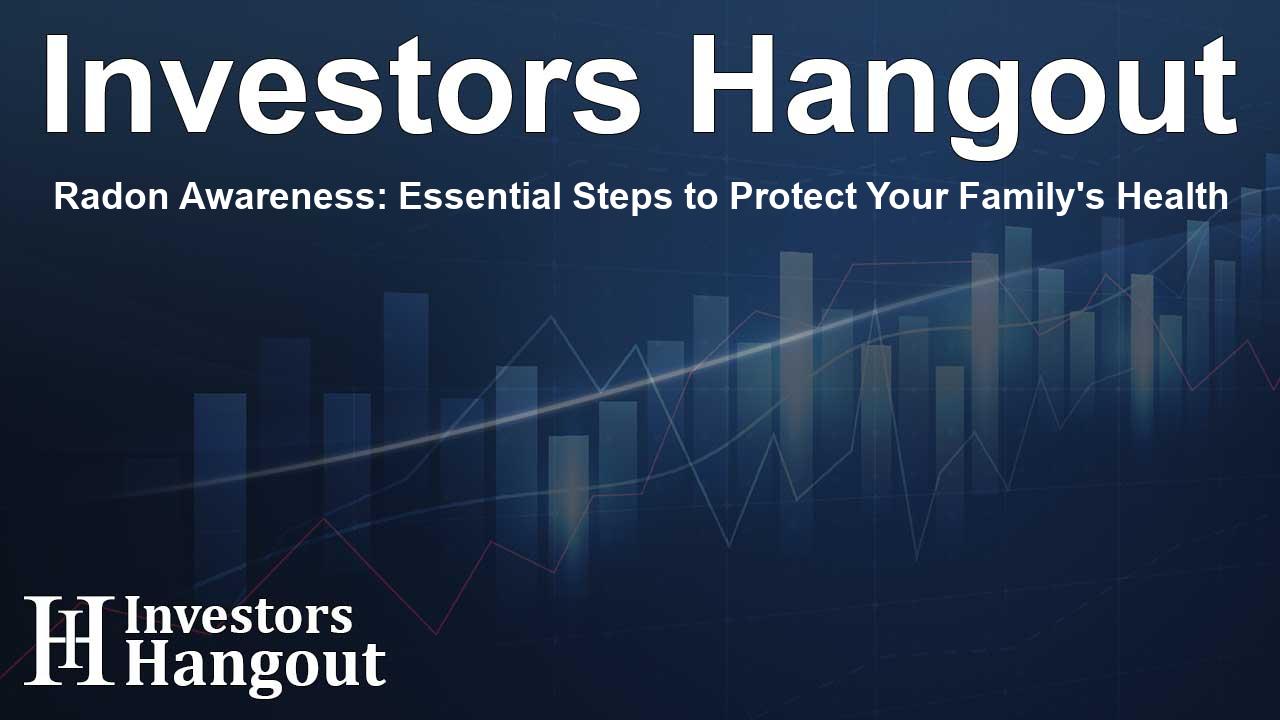Radon Awareness: Essential Steps to Protect Your Family's Health

Understanding Radon and Its Dangers
January is recognized as National Radon Action Month, and it serves as a crucial reminder for all households to address the dangers of radon gas. This colorless, odorless, and tasteless gas is responsible for a staggering 21,000 deaths annually and remains the second leading cause of lung cancer in the nation. It’s essential to take proactive steps to protect your home and loved ones from radon exposure.
The Importance of Testing for Radon
Radon is a naturally occurring radioactive gas that can accumulate in homes, schools, and various buildings. It can be present at hazardous levels in any U.S. state. The process of radon exposure can lead to serious health complications, including lung cancer, as the gas can be inhaled, releasing harmful radiation into the lungs.
Tips for Effective Radon Testing
For National Radon Action Month, the American Lung Association provides straightforward facts and actionable tips to safeguard families against radon exposure:
- Start with Testing: The initial step in mitigating radon-induced lung cancer is understanding its presence. Elevated radon levels can be found in many homes across the country, with some areas seeing up to 1 in 3 homes affected. The only way to confirm radon levels in your environment is through testing. Convenient do-it-yourself test kits are available and are quite cost-effective. Additionally, many markets are offering free radon test kits, which can be a great opportunity to ensure your home is safe.
- Test During Real Estate Transactions: It is highly recommended to test for radon whenever purchasing a home. Many resources exist to guide you through this testing process, ensuring that new homeowners are educated on the importance of radon testing right from the start.
- Responding to Test Results: When results are obtained, how to respond is vital. Radon levels are measured in picocuries per liter (pCi/L). If testing indicates levels of 4.0 pCi/L or higher, the Environmental Protection Agency suggests immediate action to reduce these levels. For unsafe levels between 2.0 and 4.0 pCi/L, it is advisable to consider mitigation options.
- Your Actions Make a Difference: It’s important to acknowledge that radon is not just a concern for smokers; it is the primary cause of lung cancer among non-smokers. Combining smoking with radon exposure raises the risk significantly. Therefore, if you or someone you know is looking to quit smoking, resources are available to support that journey.
Taking Action Against Radon
To gain more insights on how to test for and mitigate radon, individuals can explore extensive resources offered by health organizations which include comprehensive courses on radon basics. It’s crucial to keep informed and take advantage of available tools to keep your environment safe.
About the American Lung Association
The American Lung Association is dedicated to promoting better lung health and reducing the impact of lung disease through education, advocacy, and research. Their focus spans various strategies, including defeating lung cancer, advocating for clean air, improving the quality of life for those with lung diseases, and fostering a tobacco-free future. For more details or support, generous resources are available through their hotline or online platforms.
Frequently Asked Questions
What is radon, and why is it dangerous?
Radon is a colorless, odorless gas that can lead to lung cancer when inhaled over time, making it a serious health risk in residential areas.
How can I test for radon in my home?
You can test for radon using DIY test kits, which are affordable and easy to use. Testing every two years is recommended.
What action should I take if high radon levels are detected?
If radon levels are at or above 4.0 pCi/L, it is crucial to take steps to mitigate it, such as hiring a qualified professional for mitigation solutions.
How prevalent is radon in homes?
Radon can be found in homes across every state in the U.S., with some regions seeing elevated levels in as many as 1 in 3 homes.
Are there resources for radon testing available?
Yes, various organizations provide free testing kits and information on radon mitigation to help ensure family safety from radon exposure.
About Investors Hangout
Investors Hangout is a leading online stock forum for financial discussion and learning, offering a wide range of free tools and resources. It draws in traders of all levels, who exchange market knowledge, investigate trading tactics, and keep an eye on industry developments in real time. Featuring financial articles, stock message boards, quotes, charts, company profiles, and live news updates. Through cooperative learning and a wealth of informational resources, it helps users from novices creating their first portfolios to experts honing their techniques. Join Investors Hangout today: https://investorshangout.com/
Disclaimer: The content of this article is solely for general informational purposes only; it does not represent legal, financial, or investment advice. Investors Hangout does not offer financial advice; the author is not a licensed financial advisor. Consult a qualified advisor before making any financial or investment decisions based on this article. The author's interpretation of publicly available data shapes the opinions presented here; as a result, they should not be taken as advice to purchase, sell, or hold any securities mentioned or any other investments. The author does not guarantee the accuracy, completeness, or timeliness of any material, providing it "as is." Information and market conditions may change; past performance is not indicative of future outcomes. If any of the material offered here is inaccurate, please contact us for corrections.